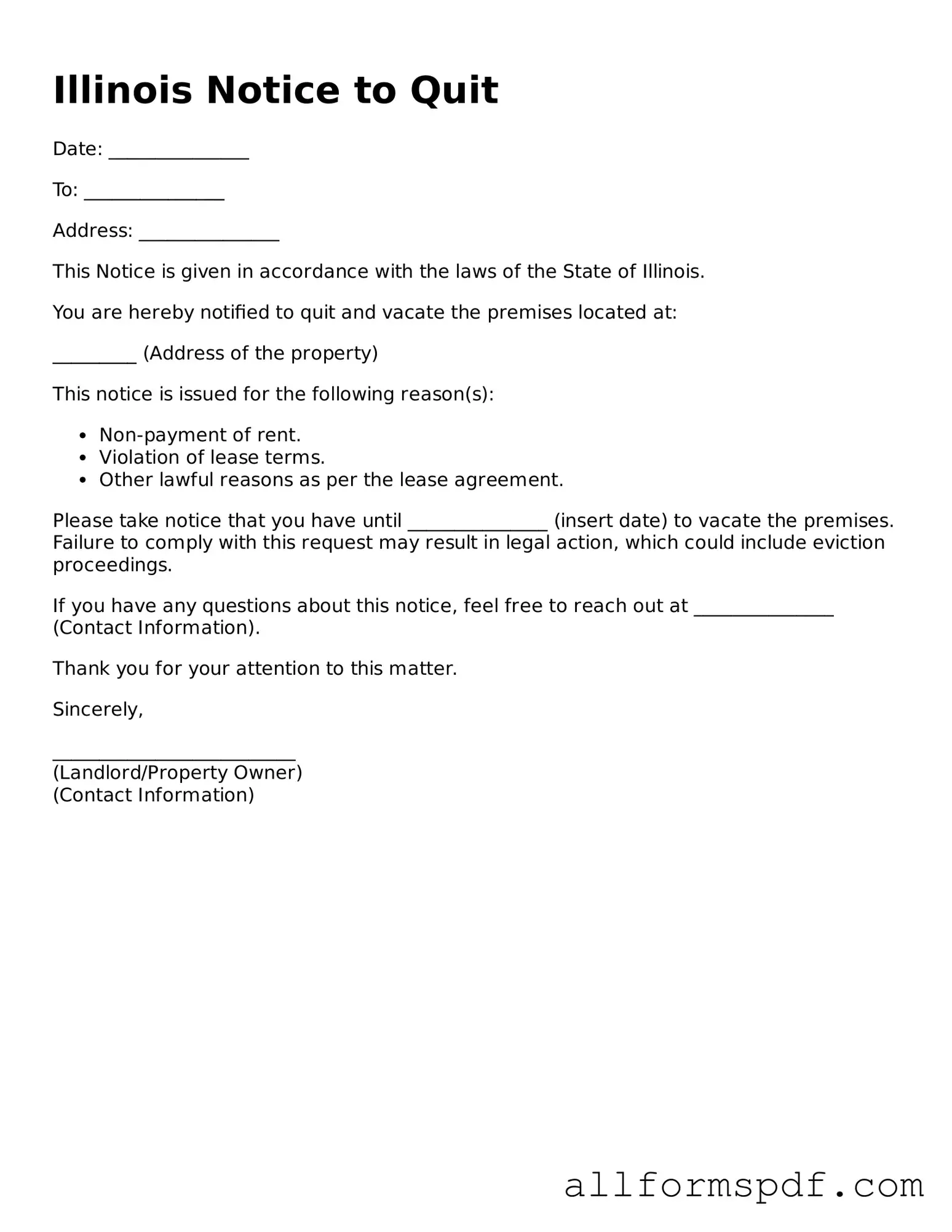Fillable Notice to Quit Form for Illinois
The Illinois Notice to Quit form is a legal document that a landlord uses to inform a tenant that they must vacate the rental property. This notice typically outlines the reasons for termination of the lease, such as non-payment of rent or lease violations. Understanding this form is crucial for both tenants and landlords to ensure a smooth transition and adherence to state laws.
Create My Notice to Quit Now
